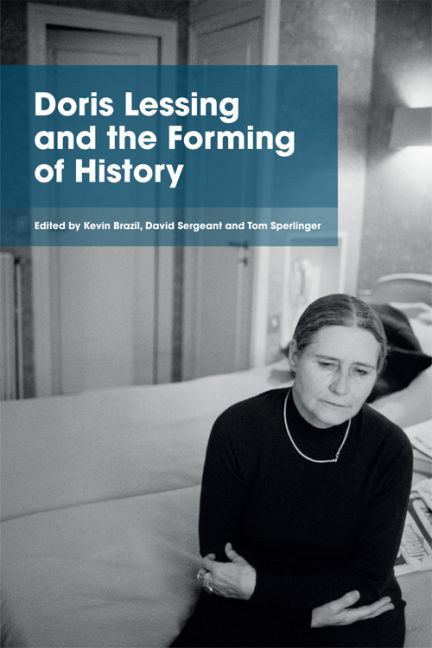Book contents
- Frontmatter
- Contents
- Acknowledgements
- Timeline
- Introduction
- 1 Early Lessing, Commitment, the World
- 2 ‘I'm an adolescent. And that's how I'm going to stay’: Lessing and Youth Culture 1956–1962
- 3 Sequence, Series and Character in Children of Violence
- 4 The Politics of Form: The Golden Notebook and Women's Radical Literary Tradition
- 5 Readers of Fiction and Readers in Fiction: Readership and The Golden Notebook
- 6 From The Grass is Singing to The Golden Notebook: Film, Literature and Psychoanalysis
- 7 ‘funny thing laughter, what's it for?’: Humour and Form in Lessing's Fiction,A
- 8 Lessing and the Scale of Environmental Crisis
- 9 Lessing and Time Travel
- 10 Lessing's Interruptions
- 11 Lessing's Witness Literature
- 12 A Catastrophic Universe: Lessing, Posthumanism and Deep History
- Select Bibliography
- Notes on Contributors
- Index
10 - Lessing's Interruptions
Published online by Cambridge University Press: 26 May 2017
- Frontmatter
- Contents
- Acknowledgements
- Timeline
- Introduction
- 1 Early Lessing, Commitment, the World
- 2 ‘I'm an adolescent. And that's how I'm going to stay’: Lessing and Youth Culture 1956–1962
- 3 Sequence, Series and Character in Children of Violence
- 4 The Politics of Form: The Golden Notebook and Women's Radical Literary Tradition
- 5 Readers of Fiction and Readers in Fiction: Readership and The Golden Notebook
- 6 From The Grass is Singing to The Golden Notebook: Film, Literature and Psychoanalysis
- 7 ‘funny thing laughter, what's it for?’: Humour and Form in Lessing's Fiction,A
- 8 Lessing and the Scale of Environmental Crisis
- 9 Lessing and Time Travel
- 10 Lessing's Interruptions
- 11 Lessing's Witness Literature
- 12 A Catastrophic Universe: Lessing, Posthumanism and Deep History
- Select Bibliography
- Notes on Contributors
- Index
Summary
‘When I start I can write easily’, Doris Lessing once noted in an interview: ‘I've got a terrific, great facility’ (1996: 93). Jenny Diski has recalled how while she lived with Lessing in the 1960s: ‘The shotgun sound of typing went on continuously for hours. She typed incredibly fast and only infrequently paused, perhaps for a sip of tea or to light a cigarette […] She thought as she typed’ (2014). There has been a tendency to judge Lessing's prose unfavourably, partly because of the speed of its composition and to suggest that she did not omit enough material. Lessing conceded in the same interview that Anthony Burgess was ‘probably’ right to suggest that she wrote ‘too much, too many words’ and that she did not edit sufficiently (93). J. M. Coetzee asserts that Lessing was ‘never much of a stylist – she writes too fast and prunes too lightly for that’ (2002: 291).
The evidence in Lessing's typescripts complicates these claims. Lessing's draft material supports the idea that she wrote quickly and its sheer volume is daunting: a novel such as Shikasta exists in multiple full-length drafts. But the typescripts show that Lessing revised heavily too, if not in the manner Burgess and Coetzee advise. Indeed, Lessing's draft material, examined here for the first time, poses challenges to received notions of literary style. Hannah Sullivan has shown that it is a modernist view of the creative process to assume that it is always beneficial to cut drastically, citing Marianne Moore's statement: ‘Anything is improved by omissions’ (2008: 502). Sullivan argues that this emphasis suited the environment of modernism, which favoured ‘making’ art (rather than inspiration) and utilised emerging technologies that made revision easier, including the typewriter.
Lessing's mode of composition is similarly intertwined with use of a typewriter. But whereas, as Sullivan shows, modernist writers often typed up their work from a handwritten draft, none of Lessing's drafts that I have examined exist in a handwritten form; each begins as a typescript. Thus we may take Diski's memories literally. Lessing ‘thought as she typed’; typing was an integral element of composition rather than a way in which the work was edited or presented for publication.
- Type
- Chapter
- Information
- Doris Lessing and the Forming of History , pp. 137 - 151Publisher: Edinburgh University PressPrint publication year: 2016



